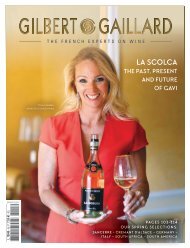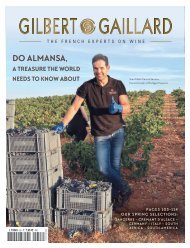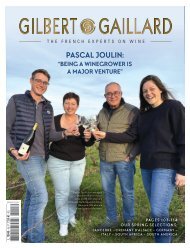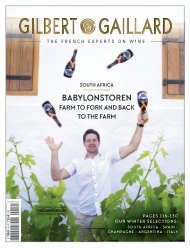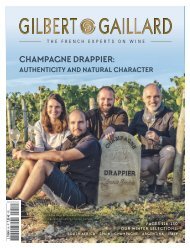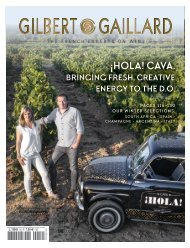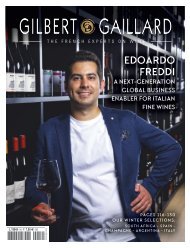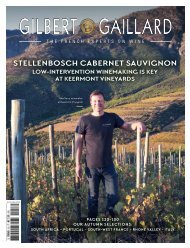Create successful ePaper yourself
Turn your PDF publications into a flip-book with our unique Google optimized e-Paper software.
PORTUGAL<br />
EVOLUTION<br />
IN 2007, CAVES CAMPELO WAS BOUGHT BY JOSÉ CARLOS LIMA & FILHOS<br />
tasked with producing Vicente Faria wines. He<br />
draws on the expertise he has garnered since childhood,<br />
with his grandfather on the steep hillsides of<br />
the Douro Valley, and from studying in Bordeaux<br />
to craft delicious pours that appeal the world over,<br />
and whose quality is endorsed by the multiple<br />
awards bestowed on his wines over the years.<br />
CAVES CAMPELO, ADAPTING TO<br />
CHANGE<br />
HÉLDER LIMA AND HIS BROTHER ÓSCAR WHO RUN<br />
CAVES CAMPELO<br />
In order to make headway outside of national<br />
borders, Portuguese winegrowers have had to redouble<br />
their efforts at every level, from producing<br />
the wines to sales and marketing. Sofia Costa, export<br />
manager with Caves Campelo, stresses that<br />
over the past few years they have invested significantly<br />
in order to make a name for themselves<br />
in foreign markets, mainly by ramping up their<br />
attendance at the major international wine fairs.<br />
This has enabled them not only to secure greater<br />
visibility, but also to gain a “broader vision of international<br />
trade and the drinking habits specific<br />
to each market. Consequently, we have tailored our<br />
wines to a more cosmopolitan style. We have also<br />
adapted not only the image of our wines, but also<br />
our range of products”.<br />
The Barcelos-based company, located in the Vinho<br />
Verde region, now exports between 75 and 80% of<br />
its wines which grace tables across Europe, but also<br />
in China, the United States and Canada. Although<br />
domestic consumption is holding up, claims Costa,<br />
the company has set its sights on exports which<br />
continue to gain traction. It markets its famous<br />
fresh, very lightly sparkling wines – on which the<br />
region’s reputation is based – along with wines<br />
from Alentejo in South-East Portugal, the Douro<br />
Valley, Dão, Tejo and Lisbon.<br />
The specific features of every region are invariably<br />
showcased because losing regional identity is not<br />
an option, claims Costa. Adapting to change also<br />
implies the ability to protect one’s heritage. The<br />
winery therefore only works with native grape<br />
varieties like Alvarinho which delivers floral and<br />
citrus aromas and lends the wine beAutiful minerality.<br />
Another example is Loureiro, which instils<br />
refreshing acidity in the wine. The choice of varie-<br />
40 SPRING 2024 • GILBERT & GAILLARD - THE FRENCH EXPERTS ON WINE




